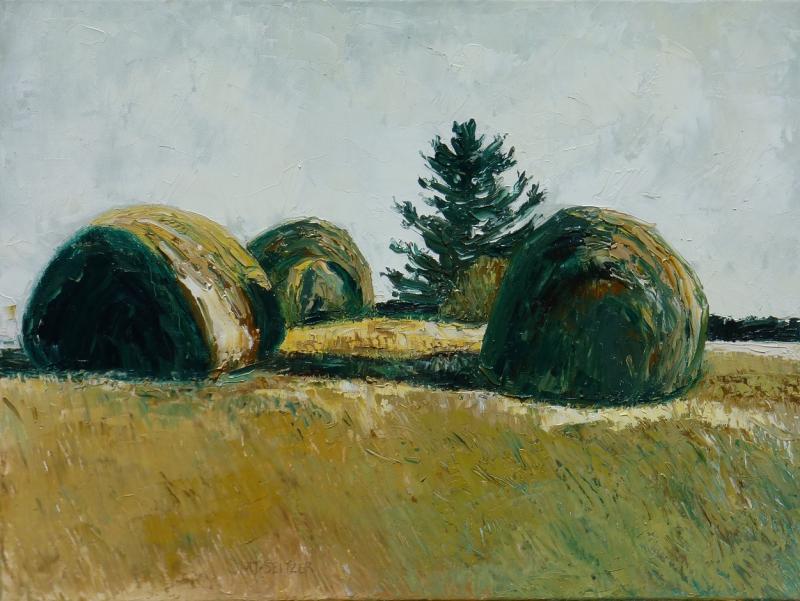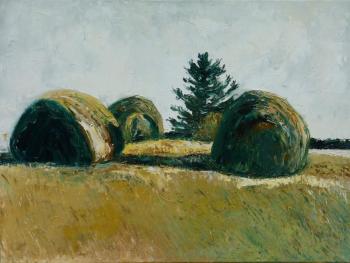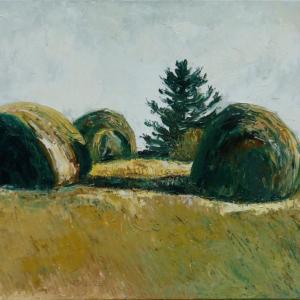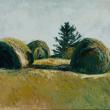John M.T. Seitzer: ‘Appropriating The Masters’
Some say it’s controversial. Even though artists and craftsmen have been doing it for centuries there remains a lack of understanding of the process. Some deride it using terms such as “knock off,” “copy” or “steal.” Others recognize it as a valid tool in artistic growth. “Appropriation in art is described as the use of pre-existing objects or images with little or no transformation applied to them. Inherent in our understanding of appropriation is the concept that new work reconceptualizes whatever it borrows to create new work” - Dictionary of Modern and Contemporary Art, Oxford University Press.
Over 2,000 years ago the Romans replicated sculptures of the ancient Greeks. Later, painters like Van Gogh, Manet, Picasso and Lichtenstein appropriated the works of artists they considered masters. Van Gogh would paint appropriations of works by Millet during the cold winter months. Picasso created images sourced from Velasquez, a fellow countryman. Picasso spoke about his artistic method: “It took me four years to paint like Raphael, but a lifetime to paint like a child.” Manet’s “Olympia” was inspired by Titian’s “Venus of Urbino.” Lichtenstein appropriated Van Gogh’s “Bedroom in Arles.” In the 1980s, artist Sherrie Levine used the “act of appropriation” itself as a theme in art. Levine often ‘visually’ quotes entire works into her own art.
Elaine Sturtevant replicated the works of Warhol. Andy Warhol borrowed images from his contemporaries and incorporated them into his own work. Currently the “digital age” produces a whole new form of appropriation as computer users borrow and integrate internet images with “copy-paste” or “drag drop.” All artists are inspired by other artists either consciously or subconsciously. These artists learned what they could from the masters work and then went on to re imagine and interpret in their own style.
These famous artists and the practice of “Appropriation” inspired and motivated present day artist John M. T. Seitzer. His exploration was a three-year-long investigation into the methods and color theories of several well known painters. He ultimately created similar yet new artworks in homage to several masters. Inspiration for much of the show was provided by the works of artists Winslow Homer, Edward Hopper, Marsden Hartley and Andrew Wyeth all of whom visited or lived in Maine. Seitzer executed most of his paintings in oil using a painting knife. Andrew Wyeth’s watercolors on paper became oil paintings on canvas. Small horizontal format paintings by Hopper were interpreted into large square original works of art. A conte’ sketch by Hartley became an oil painting. One painting in the show is from the iconic “Weatherbeaten” (Portland Museum of Art) by Winslow Homer which he has modified to create an “Extended Version.”
Come see these appropriated works which are a “tip of the hat” to the Masters who originally created them. “Appropriating The Masters: John M. T. Seitzer” - July 29 through Aug. 27 - at Studio 53 Fine Art, 53 Townsend Ave., Boothbay Harbor.
An artist ‘s reception will be held Friday, Aug. 3 from 5-7 p.m. For more information, call the gallery at 633-2755 or visit www.studio53fineart.com. For more on the artist, visit https://www.facebook.com/Joy-To-The-Wind-Gallery.
Event Date
Address
53 Townsend Avenue
Boothbay Harbor, ME 04538
United States
























